We wanted to focus on creating a mental health app that would be useful for the daily problems of eco-anxious users and the negative feelings related to this type of anxiety.
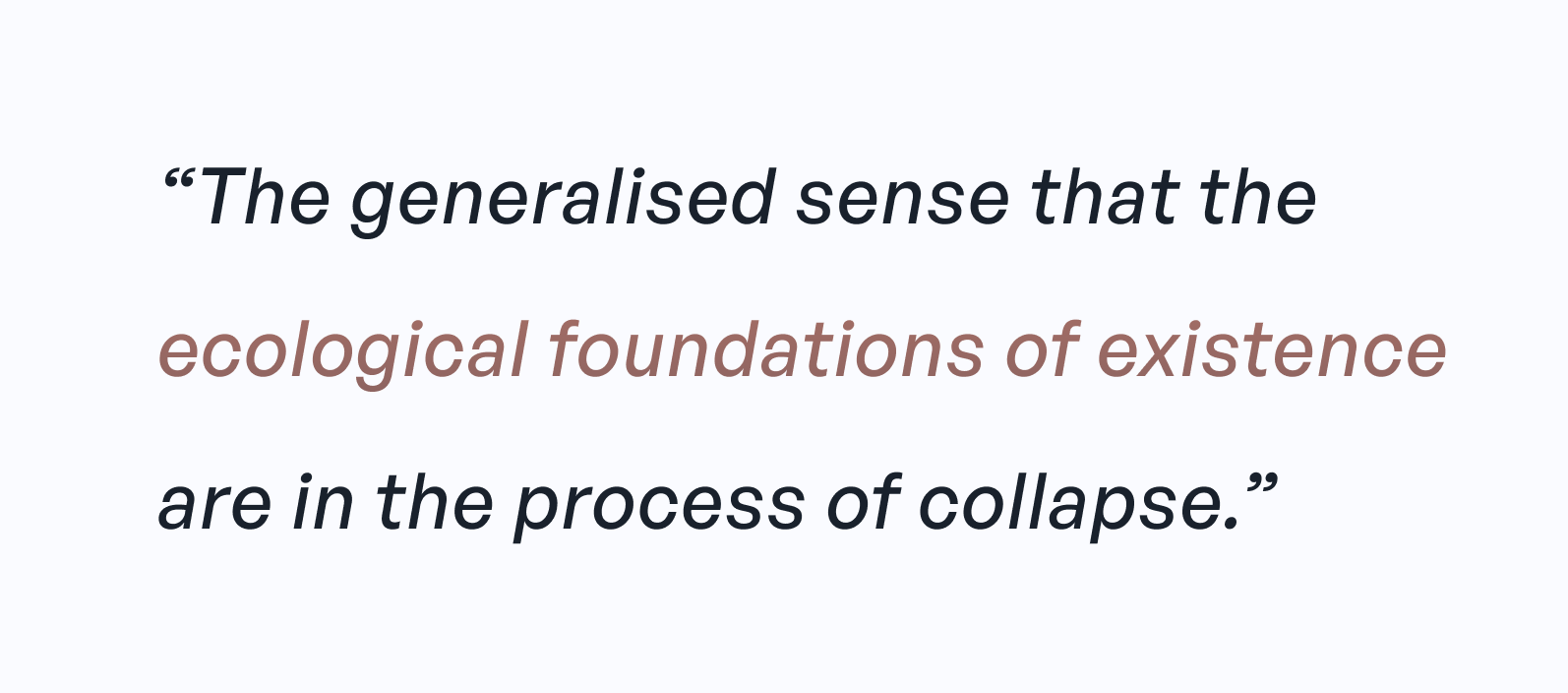
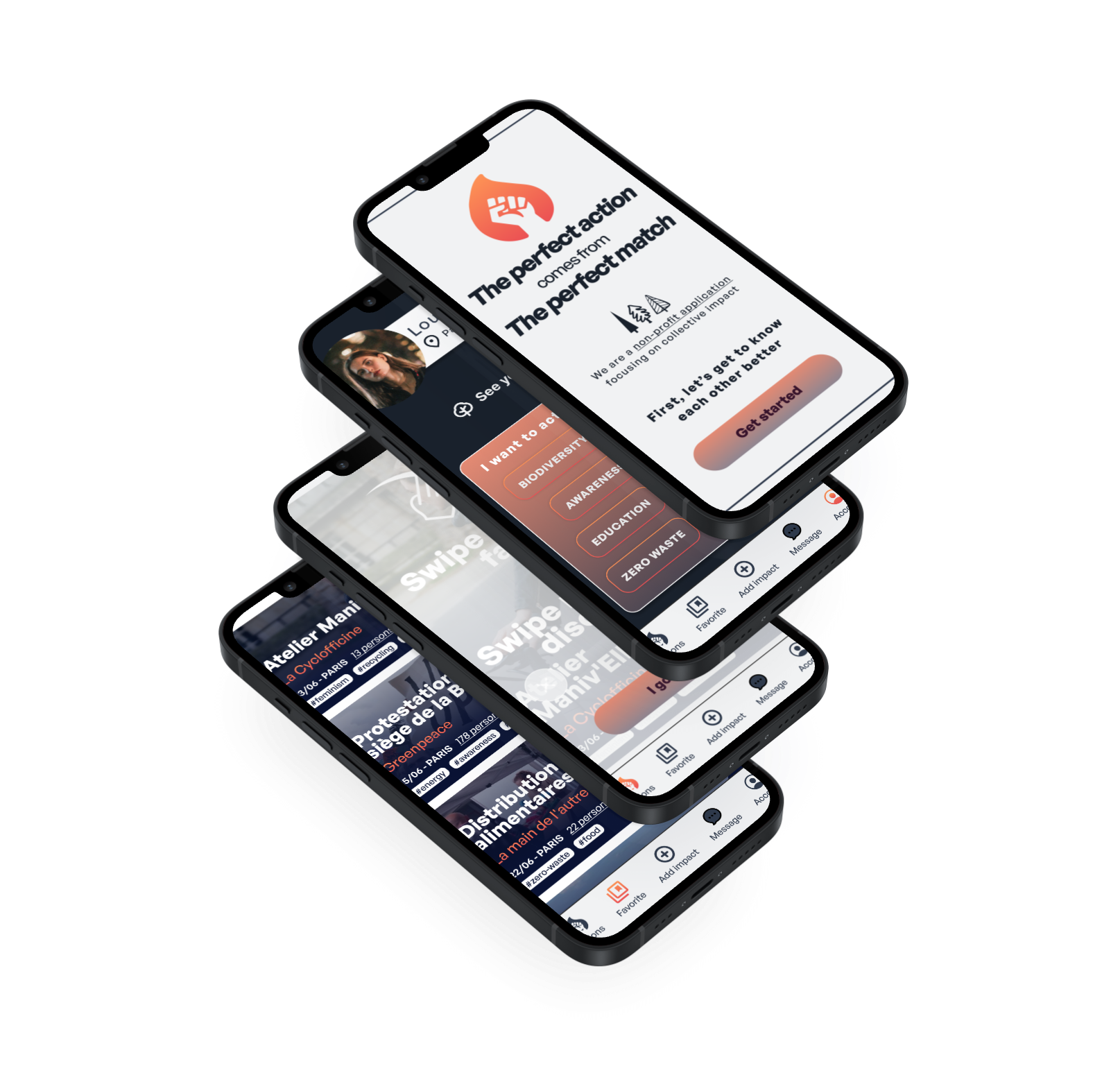
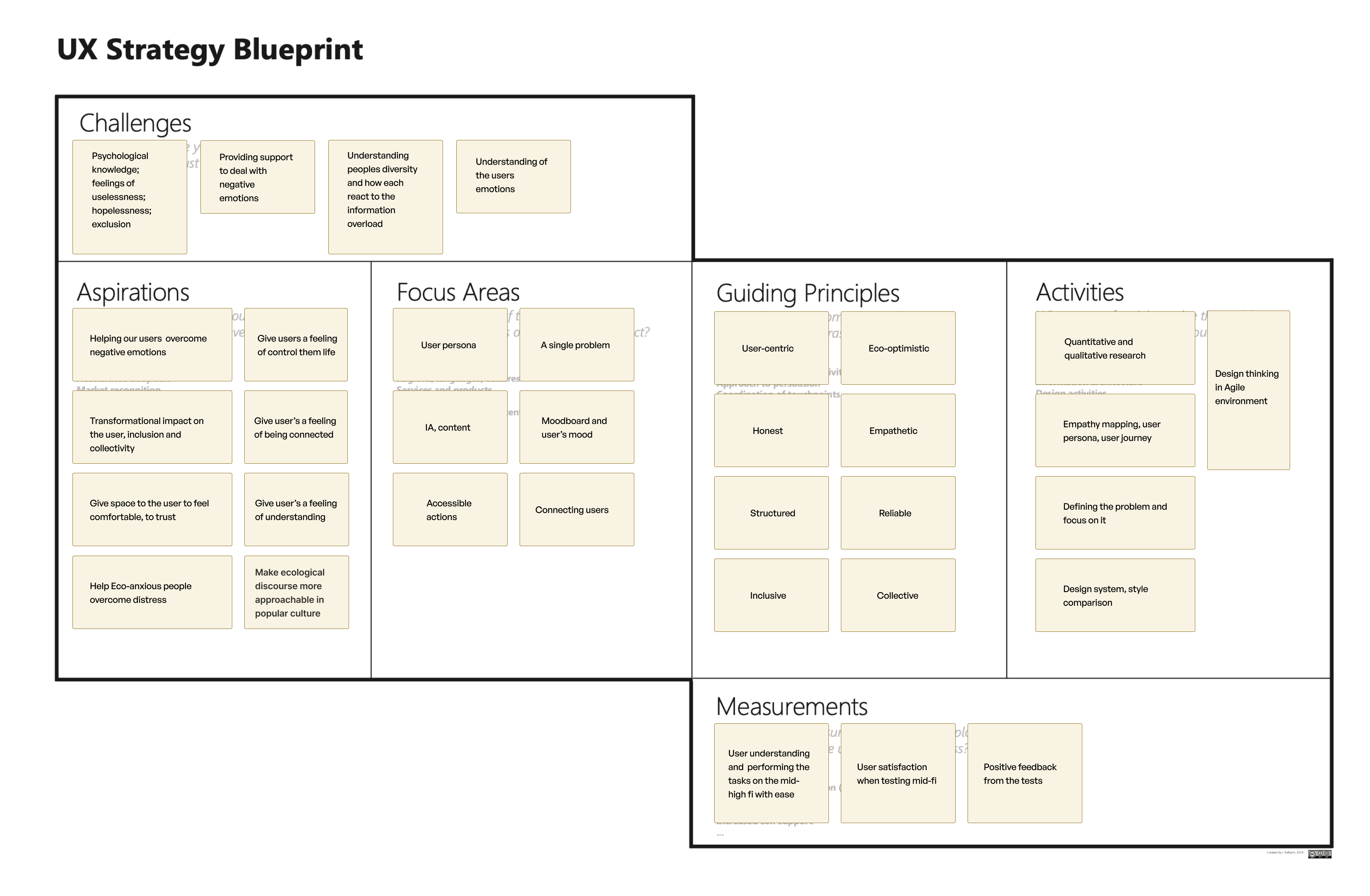
We interviewed a psychiatrist, to understand the problem better, we wanted to find out where is it coming from. He reviled his professional opinion:
"Eco-anxiety is not considered a medical condition, however, it could have a severe impact on the mental health of individuals. It is often an effect of already existing mental problems, although the best solution could be to simply act and to share progression with people alike."
From our 6 interviews in total, we’ve learned that people who suffer from eco-anxiety have tried at least once to take action or do something meaningful to improve their state. They declare that they are likely to take an action once again. Their biggest pain point is struggeling to find the right association or the events that represent their causes. The majority expressed a sense of fatality when they observe their surroundings and the way political actions are insufficient. Three people expressed a big concern about inaccurate or faulty media coverage concerning ecology and climate change in general.
We discovered 3 main types of reaction to accumulated eco-anxiety.
For over 60% of surveyed it is taking action, although 30% admitted to experience some kind of paralysis, while 9% does not feel any urge to action and feels blocked with the feeling of eco-anxiety.
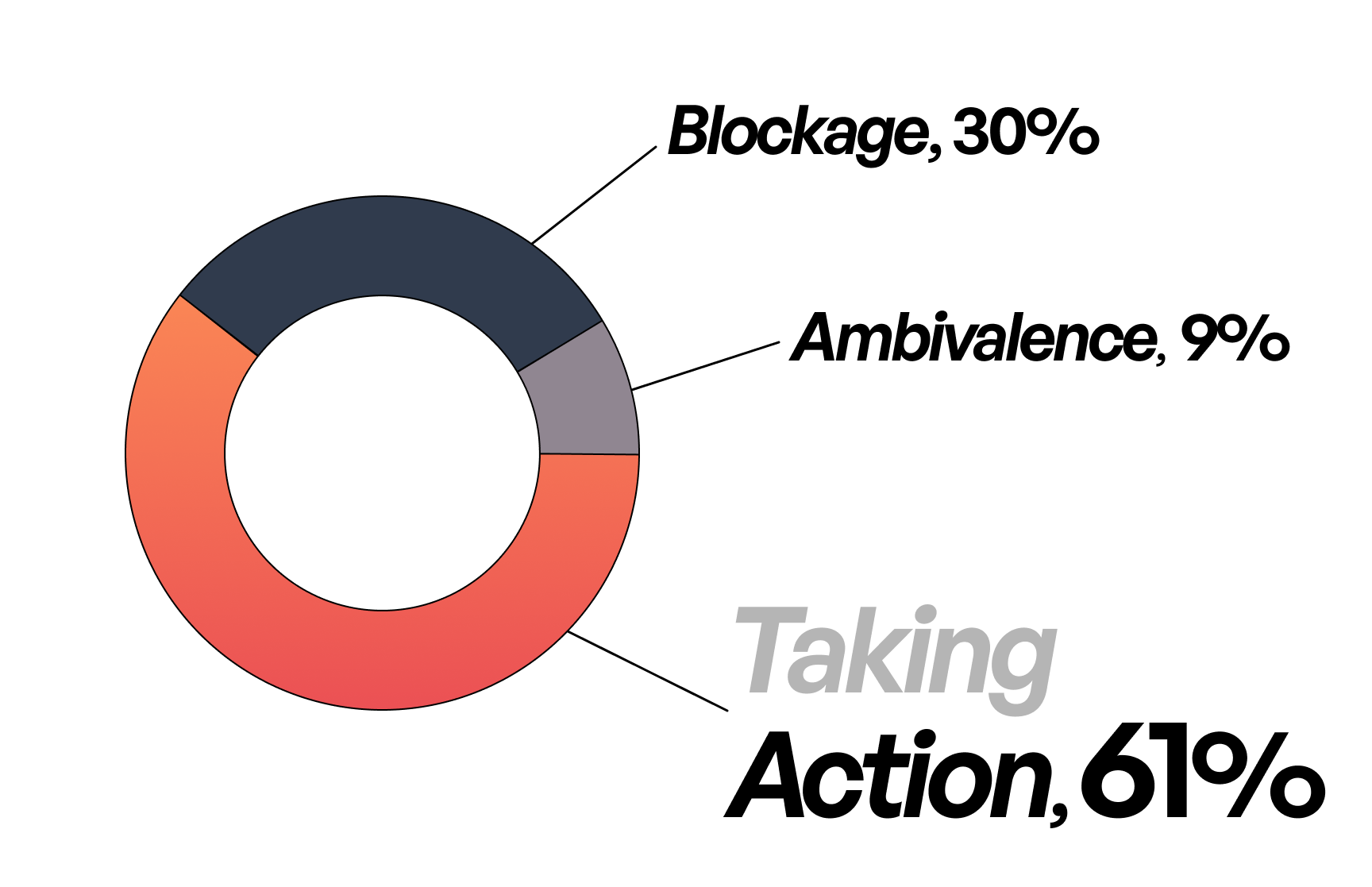
After creating an affinity map, we discovered the following conclusions on the major topics we have touched on:
In order to sum-up in an actionable way, the user's goals and issues that must be adressed to satisfy the user we came up with the following problem statement:
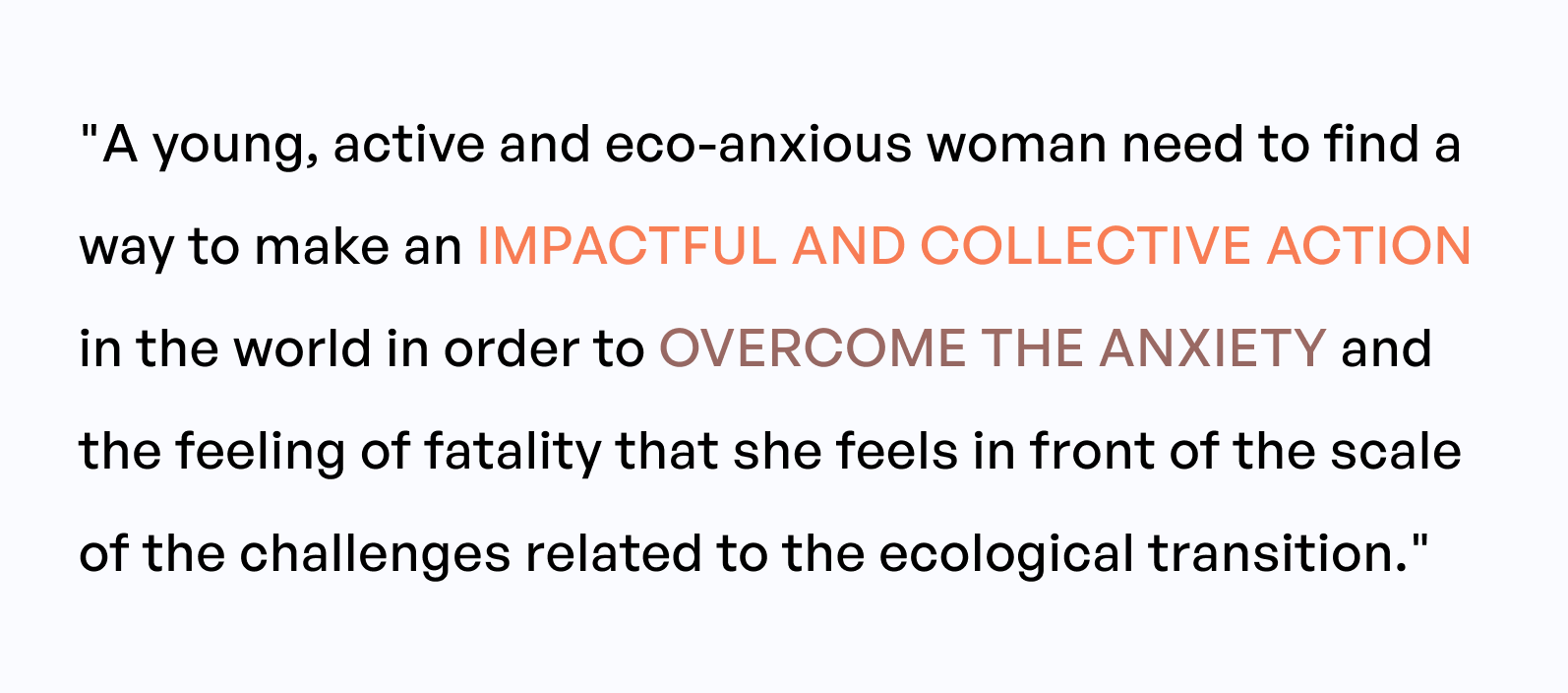
Meet Lou, an eco-anxious social worker living in Paris. Lou would like to act for the environment’s good, she is motivated by her beliefs and emotions, but she feels frustrated because of her lack of actions. Lou is feelings powerlessness, misunderstood and sometimes even isolated.
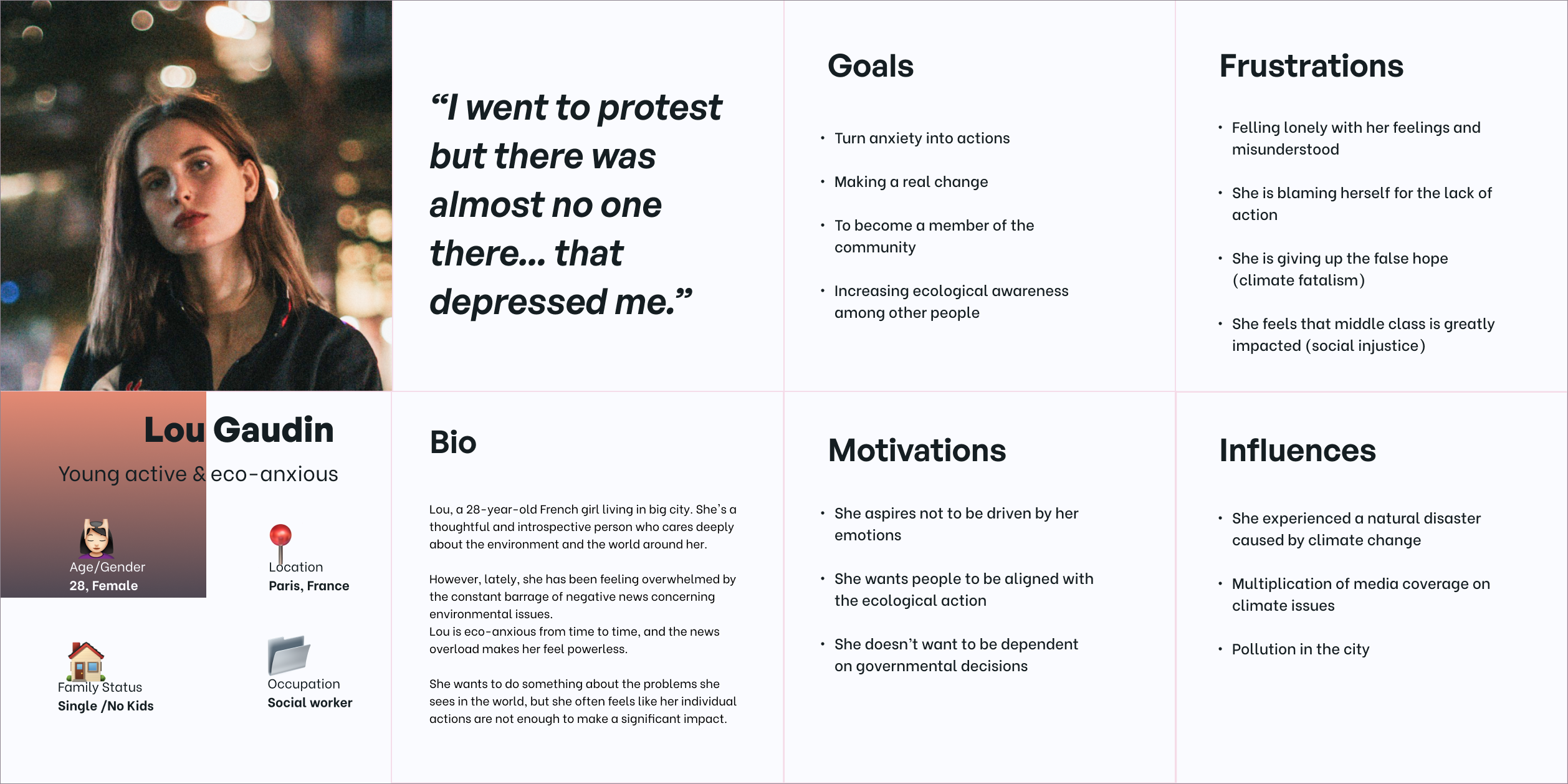
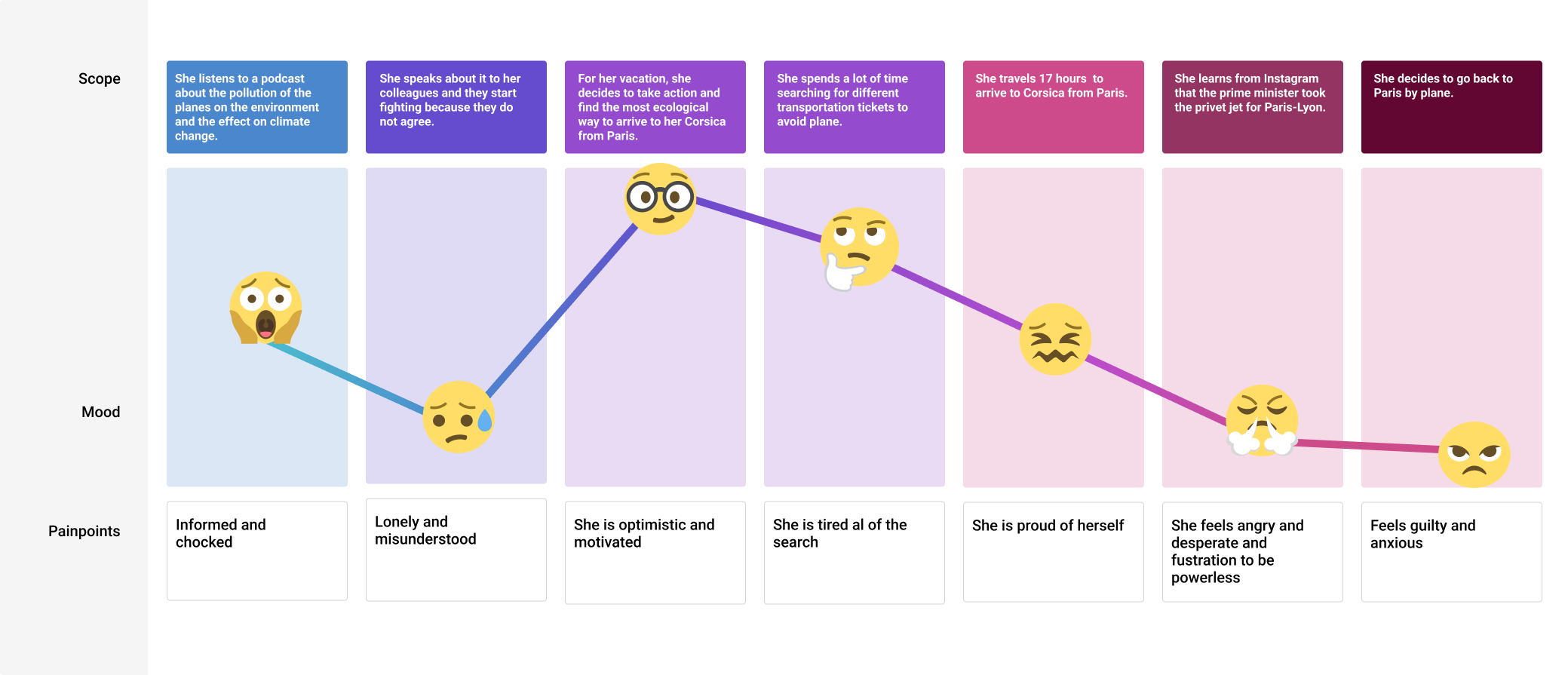
Lou is travelling a lot, so we want to emphasise her negative reaction to the pieces of information found on social networks. She has some ideas and wants to try to act differently. She learn from social networks that politicians are traveling short distances by plain, she feels frustrated and she abandons her plan to travel by car instead of taking a flight.
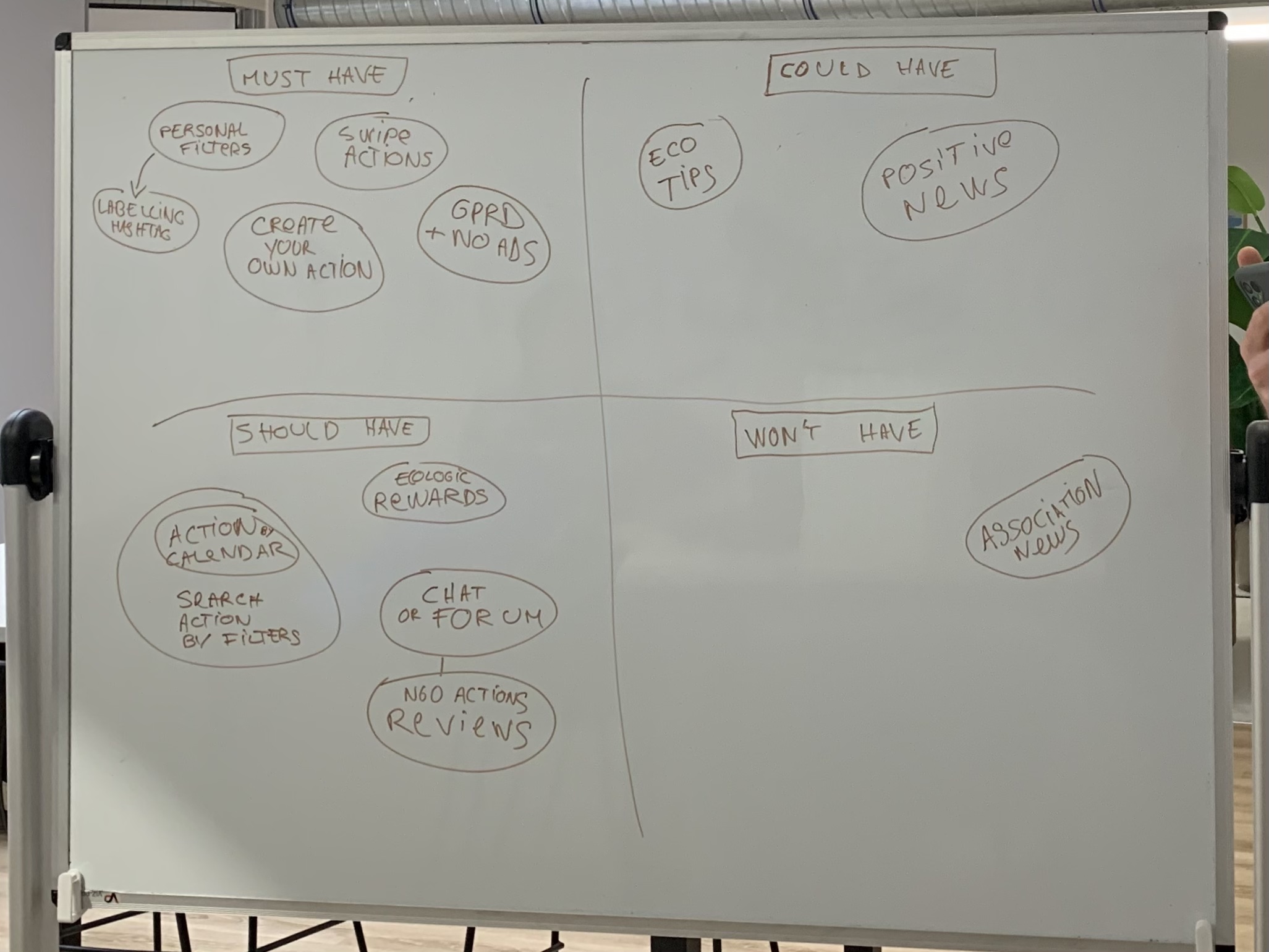
We withdrew those concepts from the Worst Ideas and Crazy 8’s seances, we created the Low-fi wireframes sketches respecting the Sitemap and the User flow. These sketches helped us to think through how the application should be organised and visualised.
Then we conducted the concept tests, as potential users’ feedback was mostly positive, and we collected all the information on unclear or inconvenient elements of our lo-fi. Tests allowed us to pursue designing our mid-fi, trying to respect as much as possible all the elements structured in the Mid-fi. We improved our lo-fi and jumped into the mid-fi prototype.
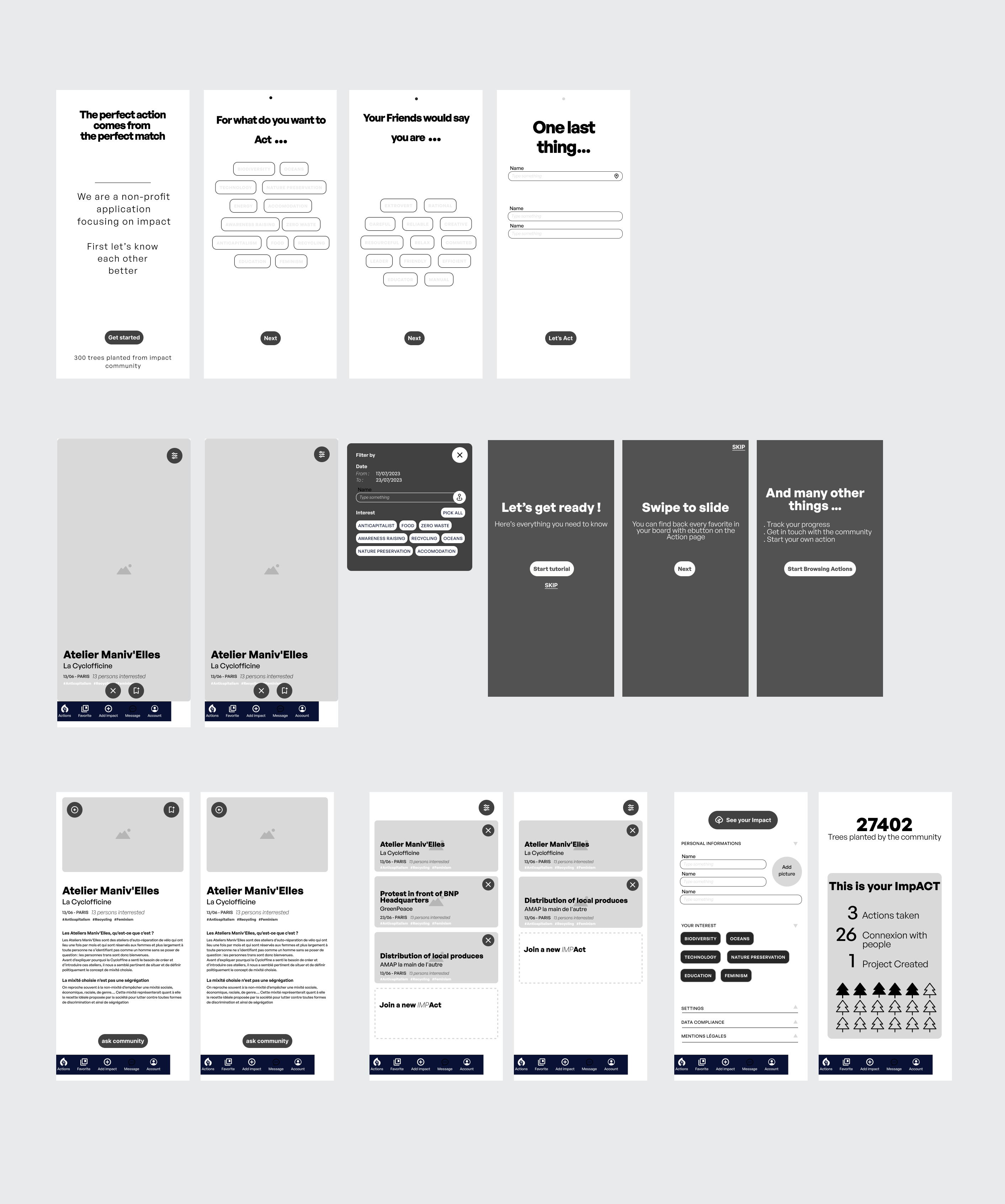
Our application was made for those who want to enhance their thoughts, emotions and mood, which appeared in response to environmental fear. Users are being invited to create and share environmental actions, track their development, set the profile and enjoy the overall experience. This platform has been created for those who want to participate, create, change, educate, make actions, for people who cares profoundly about the future of our planet.
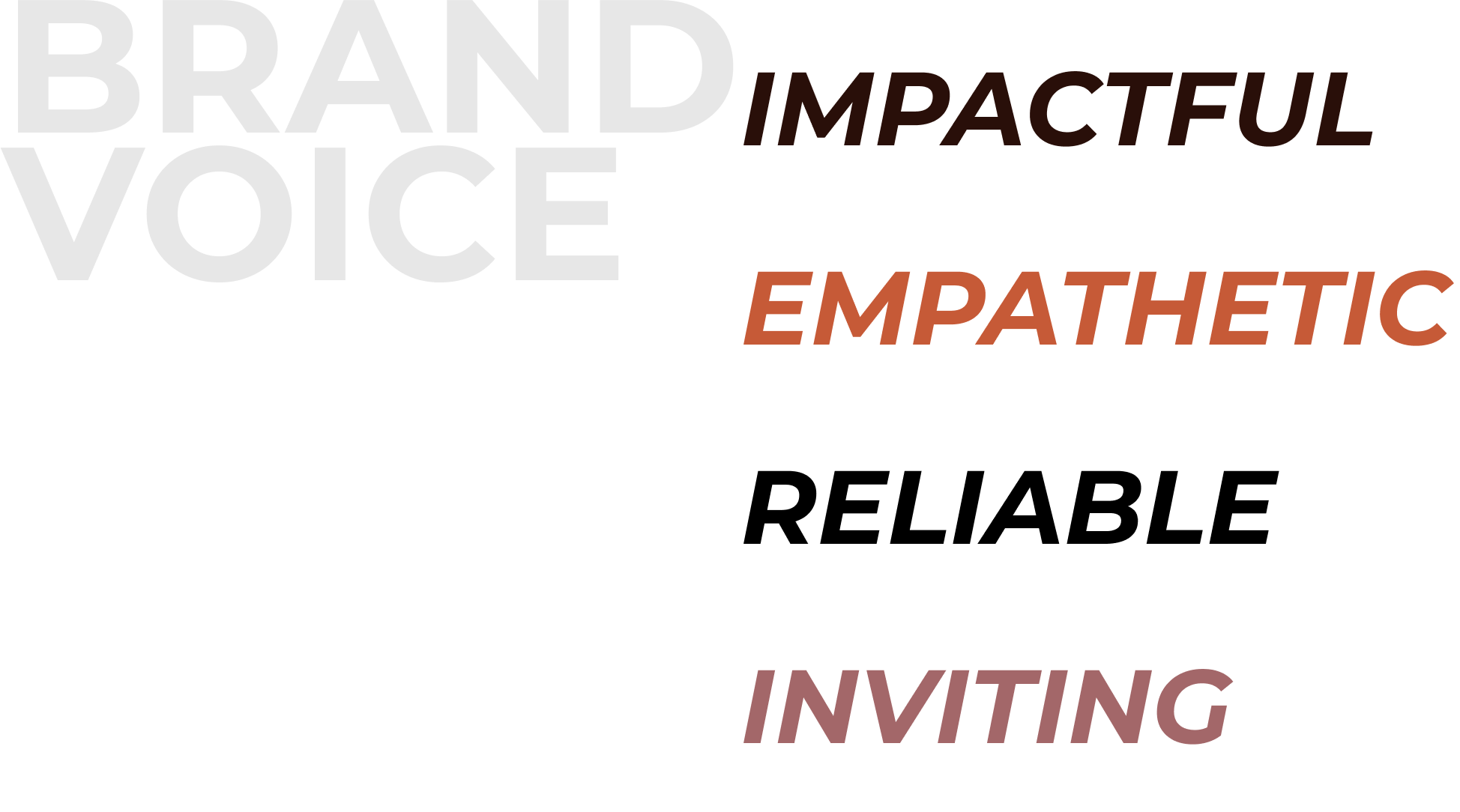
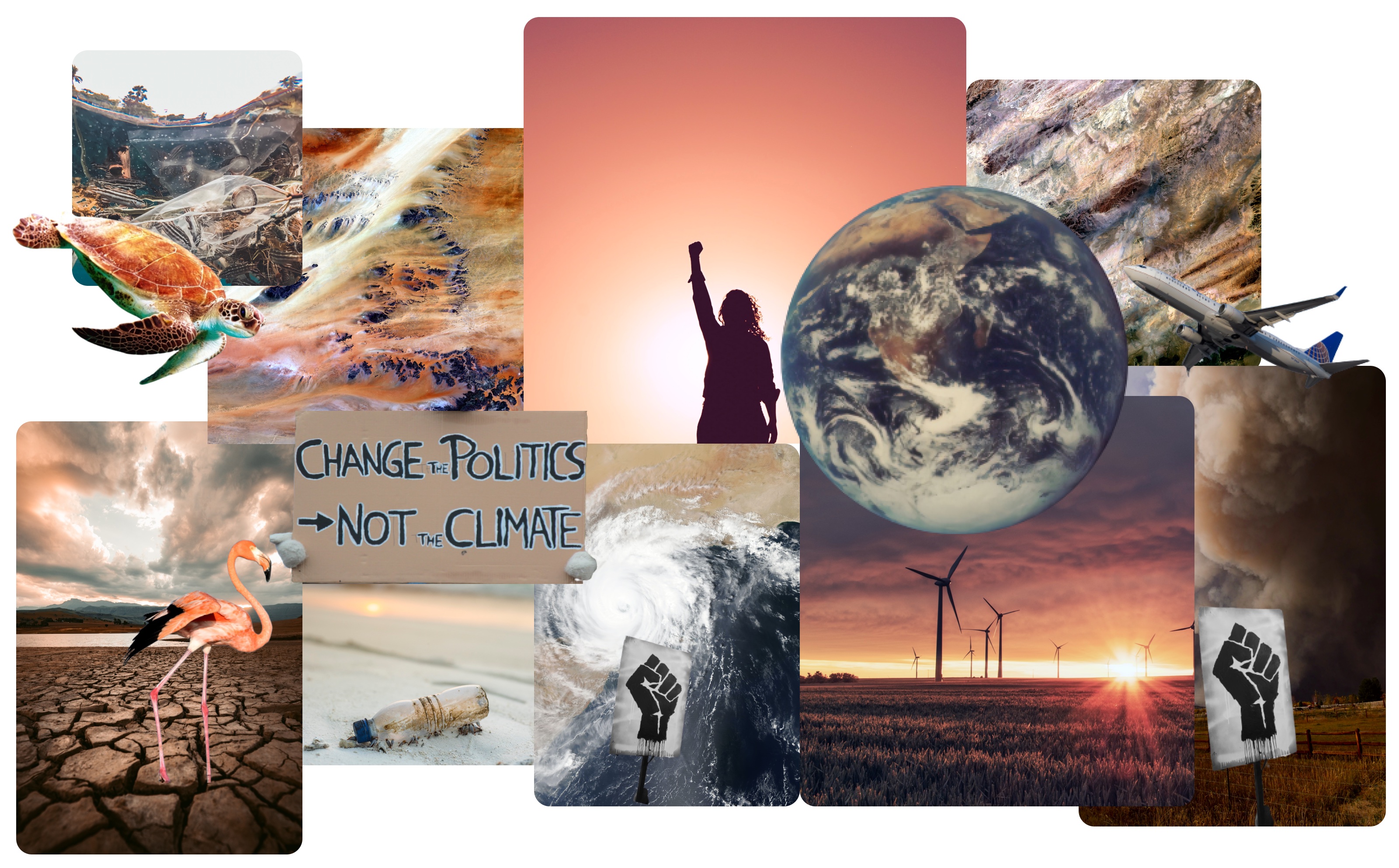
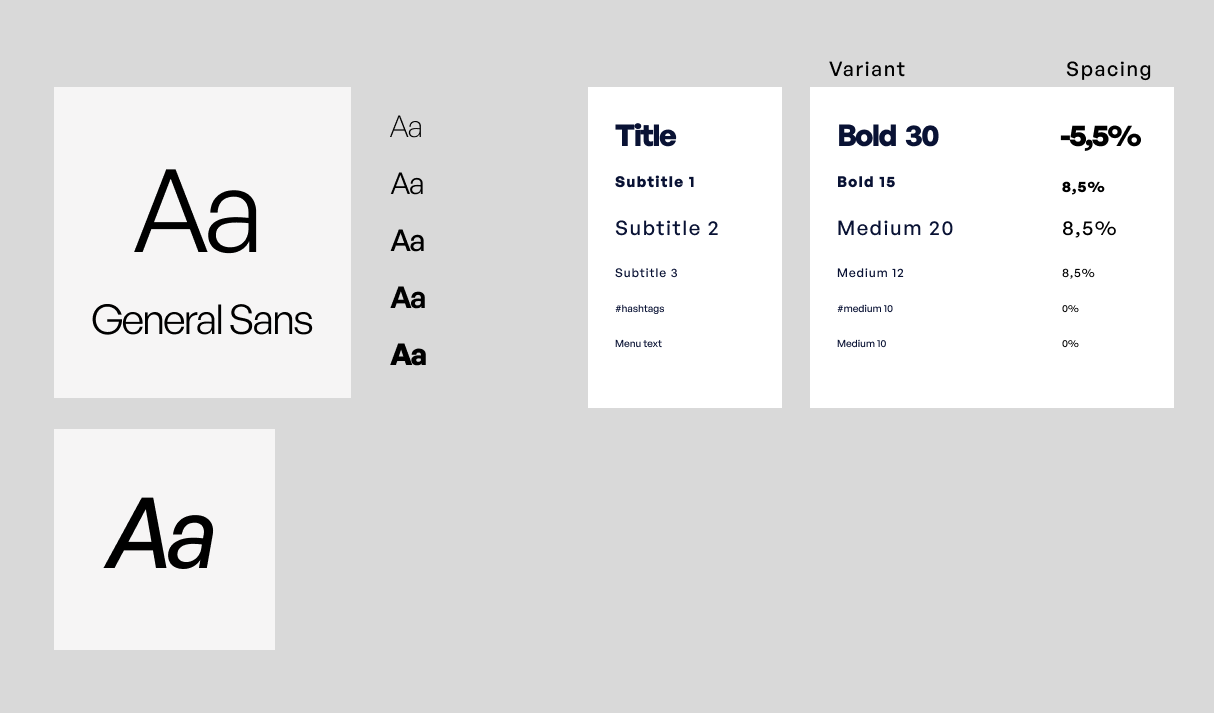
General Sans is rather compact, rational, and strict font family. It saves on space without looking too condensed. Being beneficial for compact line-heights, we’ve seen it as and advantage for mobile app design, where space is so important.
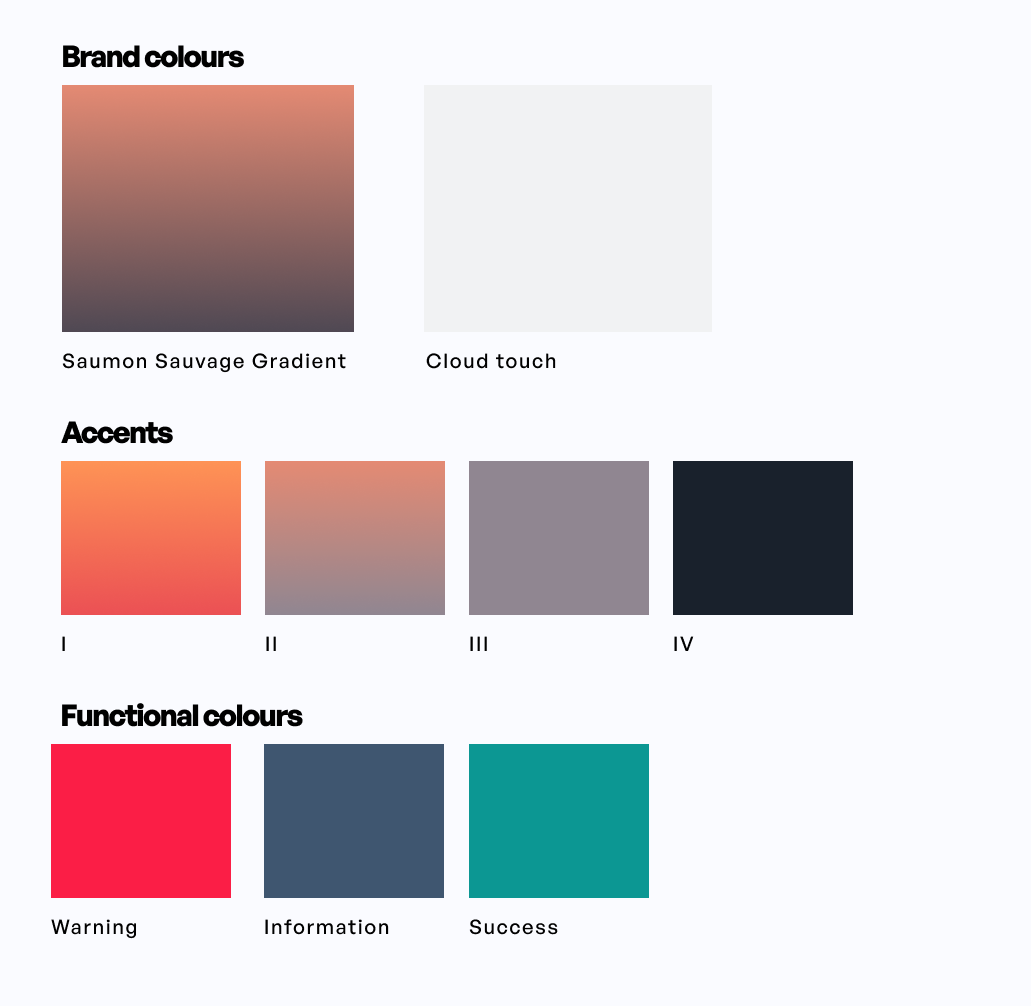
Orange is an invigorating, playful colour, and it’s one that will make a logo stand out from the crowd and it’s often used to represent the positive change or action and energy. Of course the intuitive way is to express the ecological nature of our application — go with greens, but in this case we want to propose a brand new product, a innovative platform, which is inviting and welcoming. The orange is strong and energetic, so it can signify the most important brand attribute, impactful.
If you like what you see and want to work together, get in touch!
martyna_typology@outlook.com